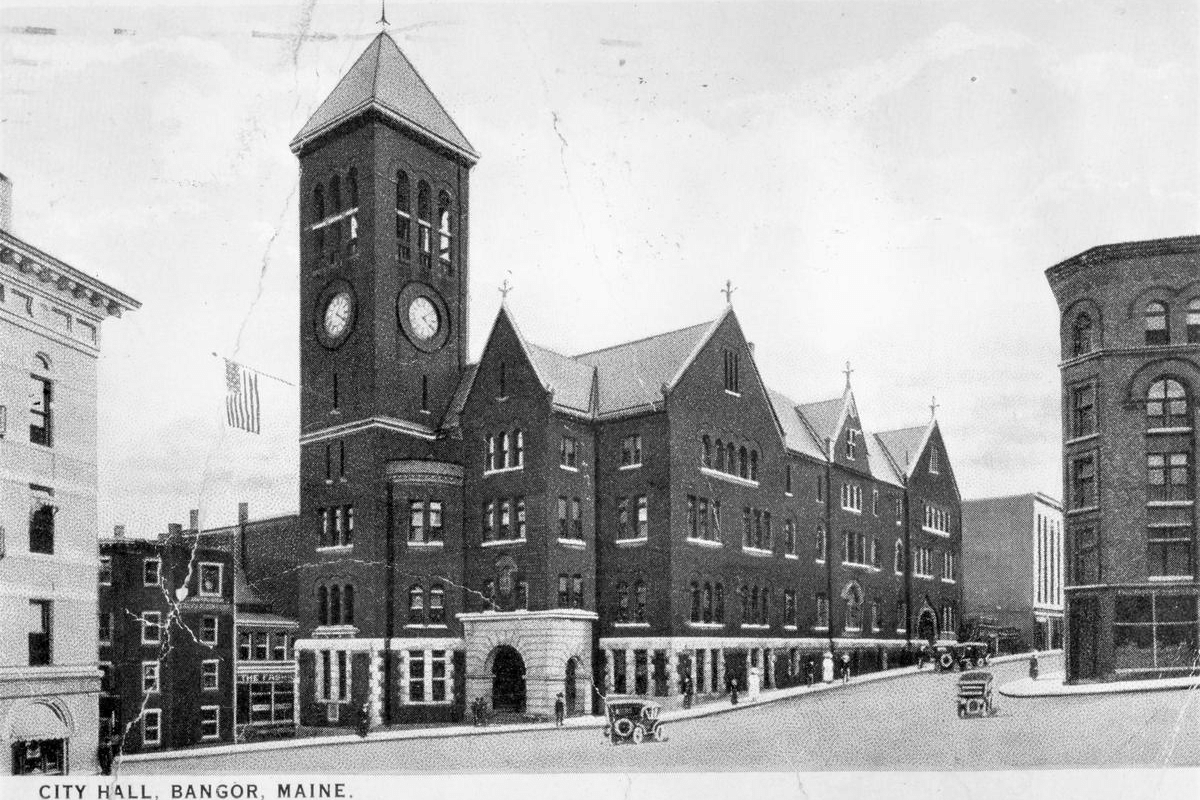
Arcadia Publishing released Bangor historian Richard Shaw’s ninth title, “Bangor: Then and Now,” a collection of images of the past and the present in the Queen City.
The book released this week is the latest in a 30-year collaboration between Shaw and the company that is known nationwide for its sepia-toned cover art and nostalgia-fueled content.
Arcadia Publishing, based in South Carolina, has more than 16,000 titles in print, but when it started out 30 years ago, it was a small family-owned publisher in Dover, New Hampshire. It had only a handful of books published about local history in towns across the country, told through historic photographs.
Among its very first books in its flagship “Images of America” series were four on towns in Maine: Saco, Houlton, York and Bangor.
When looking for someone to write the book on Bangor, Arcadia found Shaw, who for most of his life has been passionate about documenting the history of Bangor and eastern Maine. His first book with Arcadia, “Images of America: Bangor” came out in 1994, and was an early bestseller for the up and coming publisher.


“It gives people something back from a past they may remember fondly,” said Shaw, now 70, who retired in 2021 after a long career working for the Bangor Daily News and, later, Bangor City Hall. “Anybody who says they don’t like history is probably just thinking about the boring teachers they had in school. Once you start looking at old photos of your family or your town, you’re sucked in. It’s not boring at all. It’s real.”
“Bangor: Then and Now” juxtaposes historic photographs from as far back as the 1870s with present-day images of different locations in the city. Some images are surprisingly similar, such as those of the Tarratine Club on Park Street, the Thomas A. Hill House on Union Street (now the home of the Bangor Historical Society), the Bangor Public Library and John Bapst Memorial High School.
Others are shockingly different, such as that of the original Bangor High School, which stood where the Abbott Square Parking Lot is today, and the original Bangor City Hall, which stood where the Columbia Street parking garage is now. Images of Franklin and Exchange streets during the Great Bangor Fire of 1911 compared to today show how complete the devastation of the blaze truly was.
Shaw said he spent many hours driving around town, looking for the perfect angles to take photos of present-day sites to juxtapose them with the historic images.
“Because of the pandemic I had a really long deadline, so I bought a new camera and rode around town. I must have taken a thousand photos,” he said. “I would often pull over and try to take a photo and get a dirty look from people as I was standing on the side of the road.”
Shaw said the process of compiling and writing a book for Arcadia is far easier today compared to when he started in 1993.
“Back then, I had to drive everything down to New Hampshire and scan every image by hand. They also printed in England, so all the books would arrive on a big barge,” he said. “Today, I just put everything in Dropbox. I never have to leave Bangor.”
Other books written by Shaw for Arcadia include “Bangor Vol. II: The 20th Century,” “Bangor in Vintage Postcards,” “Images of America: The Lower Penobscot River Region,” “Images of America: Around Ellsworth and Blue Hill,” “Images of America: Brewer,” “Blue Hill and Ellsworth in Vintage Postcards,” and “Legendary Locals of Bangor,” co-written with fellow historian Brian Swartz.


Shaw still plans to write a novel, as well as a long-delayed definitive history of the Brady Gang, the infamous band of gangsters who were gunned down by the FBI on Central Street in downtown Bangor in 1937.
His three-decade relationship with Arcadia has proved incredibly successful, and Shaw hopes it will continue for years to come.
“I don’t think anybody was prepared for what a success Arcadia would become,” he said. “It’s been a lot of fun to do this and I hope it makes people feel good and smile.”
“Bangor: Then and Now” is available wherever books are sold.












